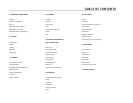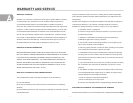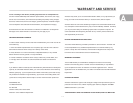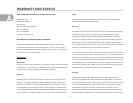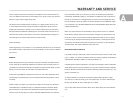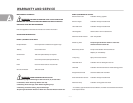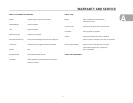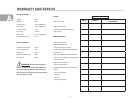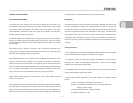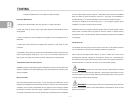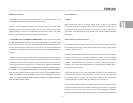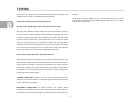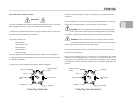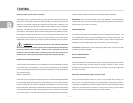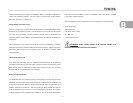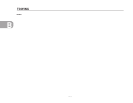
B
B - 1
TOWING
TOWING YOUR AIRSTREAM
TOW VEHICLE EQUIPMENT
If you plan to buy a new vehicle to tow your trailer we suggest that you include in your
purchase the towing options offered by most vehicle manufacturers. These include
such things a heavy-duty alternator and radiator, heavy-duty springs, (See Note:)
shock absorbers, transmission cooler, heavy-duty fan and flasher unit and others,
depending upon the make of the vehicle.
NOTICE: Be realistic when ordering heavy duty springs. Only springs heavy enough to
support your loaded vehicle (not including trailer) are necessary. Too harsh of spring
rate will only shorten the life of the tow vehicle and trailer, and will make your journeys
less enjoyable.
Transmissions may be manual or automatic, but an automatic transmission may
prolong your tow vehicle’s life and generally does a better job of controlling engine
loads than the average driver using a manual shift.
Having adequate power is very important when considering the purchase of a new
vehicle or the trailer towing capability of your present one. American manufacturers
realize more than 30% of the vehicles they sell will be used for towing some type of
trailer. The dealers are provided with guidelines to use when helping a customer decide
on a tow vehicle. The guidelines are not just determined by the power output of the
engine. The gear ratio of the differential is also a very part of the guideline.
Inspect vehicle’s hitch regularly for loose bolts or nuts, cracked welds, loose ball
mounts, worn parts, etc.
New trailerists often carry more food and other supplies than really needed. Remember
that every item you take along is one more thing to stow and adds weight to the total
load you must pull. Consolidate items in shelves, lockers, and in the refrigerator. It is
better to have one full and one empty locker, than two half empty ones. Special care
must be taken not to overload the front and rear ends of the trailer.
Disc Brakes
The disc brake system is a proven system that includes a ventilated rotor that fits over
the hub, combined with a caliper and mounting bracket that attach to the axle end
assembly by bolting to the standard brake flange. Major automobile manufacturers
and others have used this type of rotor installation for many years. The wheel studs
are pressed into the hub only. The rotor is a loose fit on the hub, is centered by the
wheel bolts, and is retained by the wheel, which in turn is retained by the wheel nuts.
Removal of the rotor can be accomplished with little effort once the caliper has been
removed.
Safety Information
1. Only qualified persons who are knowledgeable of brakes and brake systems should
perform brake installation, maintenance or repair on any vehicle.
2. Familiarize yourself with state laws regarding the operation of towed vehicles,
especially with regards to brake/braking requirements. Allow for extra stopping
distance that may be required when towing.
3. Immediately after each hook up, always test that the trailer brakes are operating
properly before attaining normal road speed.
4. Make regular, periodic inspections of your trailer brakes. The inspection should
include:
a. Pads – for evidence of excessive or uneven wear.
b. Rotors – for evidence of excessive wear, scoring, excessive heat
build up, cracks, warping.
c. Actibrake Master Cylinder – proper fluid levels.
d. All bolted connections – tight



